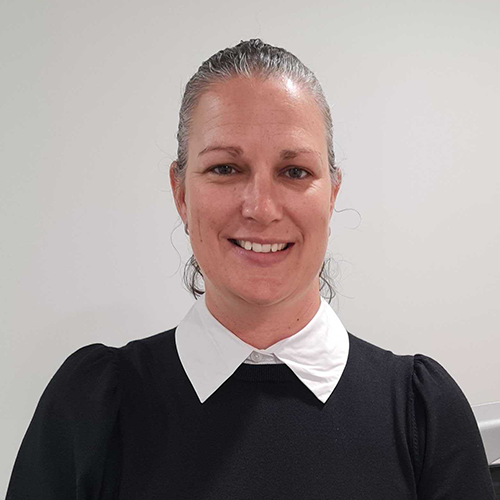Podiatry
Services & Treatments
Relieve Podiatry is fitted out with the latest podiatry technology, allowing our practitioners to provide podiatry treatments with a smart digital approach back by research.
To stay on top and give you the best podiatric care available today, all of our prctitoners attend continuing professional development courses regularly. This, along with our advanced clinical methods, ensures that all treatments exceed the highest standards delivered by our friendly team.
Get back in the game with our Sport & Biomechanics services. We fine-tune your lower limbs for peak performance, helping you stay at the top of your game.
From tiny toes to golden years, our Growing & Aging care is here for every step. We support healthy development and ease the challenges that come with age, ensuring comfort and mobility at every stage.
Walk through life with confidence. Our General Care services cover all your foot needs, from routine check-ups to specialised and advanced treatments. Because every step matters.

Our Journey
While our services are primarily focused on the allied health discipline of Podiatry, we use other specialised interventions including PBMT laser therapy, injection therapies as well as minor and major surgical options.
Meet our Specialist Podiatrist, Podiatric Surgeon and Director Dr Kent Hungerford, BHlthSci, MPodPrac, DClinPod, MACPS

Mission
To provide world-class specialist care using advanced techniques and technologies to enable lifelong movement.
Values
We are guided by three fundamental values.
Patient-centred multidisciplinary care,
Clear communication,
Supporting those in need
Vision
We exist to relieve pain and enable function. Quality of life is our goal! We aspire to improve the quality of life for everyone who comes into contact with Relieve Health Group, as well as those who work there. We only exist to help you get back into life
Meet Our Team




Podiatry
Frequently Asked Questions
A podiatrist diagnoses and treats disorders of the lower limbs and improves their function.
After completing four years of education, a podiatrist may register with the Australian Health Practitioner Regulation Agency (AHPRA).
After obtaining the necessary registration, they may examine, diagnose, and treat foot and lower limb disorders. Among the issues that may arise are the following:
- Problems with the skin and nails, such as ingrown toenails, fungal infections, corns, cracked heels, and more, can be treated.
- Medical diseases that affect the foot, such as arthritis and diabetes, may cause complications.
- Walking, running, and postural difficulties are examples of gait disorders.
- Overuse injuries to muscles, tendons, ligaments, joints, and bones result in severe inflammation, muscle rips, fractures, and joint inflammation.
Relieve Podiatry also helps with sports performance, injury prevention, everyday comfort while walking or at work, custom footwear for various feet, reducing falls, increasing balance and coordination, etc. We work with different professional and recreational sports teams to assist them in having successful seasons free of injuries.
We deal with people of various ages, from toddlers to seniors.
At Relieve Podiatry, our podiatrists work closely with various health care professionals, including primary care physicians, specialists, and allied health practitioners.
A broad range of foot issues may be addressed in general consultations and treatments, including:
- Long of thickened nails
- Calluses and corns
- Warts
- Ingrown nails
- Cracked heels
- Foot examinations and assessments for patients with chronic diseases including diabetics (includes feet artery and nerve checks)
- Athletes’ feet
- Other skin conditions
- General skin and nail care
Aside from his four-year degree, our podiatrist is one of under 40 specialist podiatric surgeons in Australia, the only one south of Sydney through to the Victorian border. This means that Dr Hungerford has undertaken specialist training in order to be able to manage everything from ingrown toenails through to ankle and achilles problems through to reconstructive foot surgery. There is regular attendance of training and education sessions as well as peer review to keep him at the top of his field and give you the most comprehensive podiatric treatment possible. This, together with our cutting-edge clinical systems, ensures that all treatments are of the highest quality. Our courteous and knowledgeable administrative team and clinical assistants are likewise well-trained to ensure that you are satisfied with every aspect of your foot care.
Initial biomechanical, complex care and surgical consultations take about an hour and include a physical and stance assessment and a gait analysis and report.
In some cases, this may include a review of previous diagnostic tests (such as a ultrasound, x-ray, CT scan, or MRI) and current or previous footwear and custom foot orthotics.
If someone refers you to the clinic, the referrer will receive this information and a detailed treatment plan.
During this consultation we will provide you with a written personalised treatment plan so that you can think about what the best option for you is.
We will do our best to provide you with treatment on the day but at times we will provide you with a plan moving forward.
Poorly fitting school shoes can stunt a child’s growth and cause issues with their stride, balance, posture, and the alignment of their toes and bones. Because the average child spends over 1000 hours each year in their school shoes, they must be fitted appropriately.
Check out this guide to help you choose the proper shoe for your kid, and if you have questions, you can contact one of our experienced podiatrists or shoe fit specialists.
LENGTH
To allow for growth, make sure the child’s longest toe (which may not be the big toe) is about a child’s thumb width from the end of the shoe. The shoe may be overly long if it’s more comprehensive than a thumb’s width.
WIDTH
Check if the shoe is wide enough and has the proper form for the child’s foot. The shoes can create blisters if they are too thin, and they will not provide enough support if they are too broad.
DEPTH
Make sure the shoe doesn’t hurt the child’s foot or be too tight all over the ball of the foot.
HEEL
Ensure the shoe is snug against the child’s heel but not too tight or too loose.
ANKLE SUPPORT
Make sure the shoe fits tightly around the ankle while not rubbing excessively. Make sure the shoe has a solid grip around the foot when attached.
WALKING
Finally, observe your child walking in their new shoes to ensure that they can walk normally and that the shoe does not slip around the heel.
No, you don’t.
A referral is appreciated but not necessary to visit a podiatrist or podiatric surgeon. However, specific individuals, such as those with Department of Veterans Affairs cards, Medicare GP Plans, and EPCs, will need referral from their GP. Those with NDIS self funded programs will be able to seek confirmation before the appointment to enable direct billing following your consultation.
We also offer HICAPS on-site so that you may make a claim straight from your private health insurance.
Podiatric surgery is a branch of medicine that specialises in the surgical treatment of foot and ankle conditions. Podiatric surgeons are qualified to perform a range of surgical procedures, from simple toenail removal to more complex procedures such as joint and soft tissue reconstructions. Some common foot and ankle conditions that may require surgery include bunions, hammer toes, plantar fasciitis, ankle sprains, and fractures. Podiatric surgery may also be necessary for conditions such as nerve entrapment, arthritis, and deformities of the foot and ankle.
Podiatric surgeons in Australia undergo extensive training that has been independently accredited by the Podiatry Board of Australia. Training in podiatric surgery involves a minimum of four years of undergraduate study followed by two years prevocational experience and training then a further six years of experience and postgraduate study in podiatric medicine and surgery. This involves extensive clinical training and supervised surgical experience. During their training, they gain a deep understanding of human anatomy, physiology, pharmacology, and surgical principles, as well as the management of complex foot and ankle conditions. This comprehensive training which is consistent with international models of training in podiatric surgery gives podiatric surgeons a thorough understanding of the unique anatomy and function of the foot and ankle and allows them to provide specialised, comprehensive care to their patients, including diagnosis, treatment, and postoperative care.
